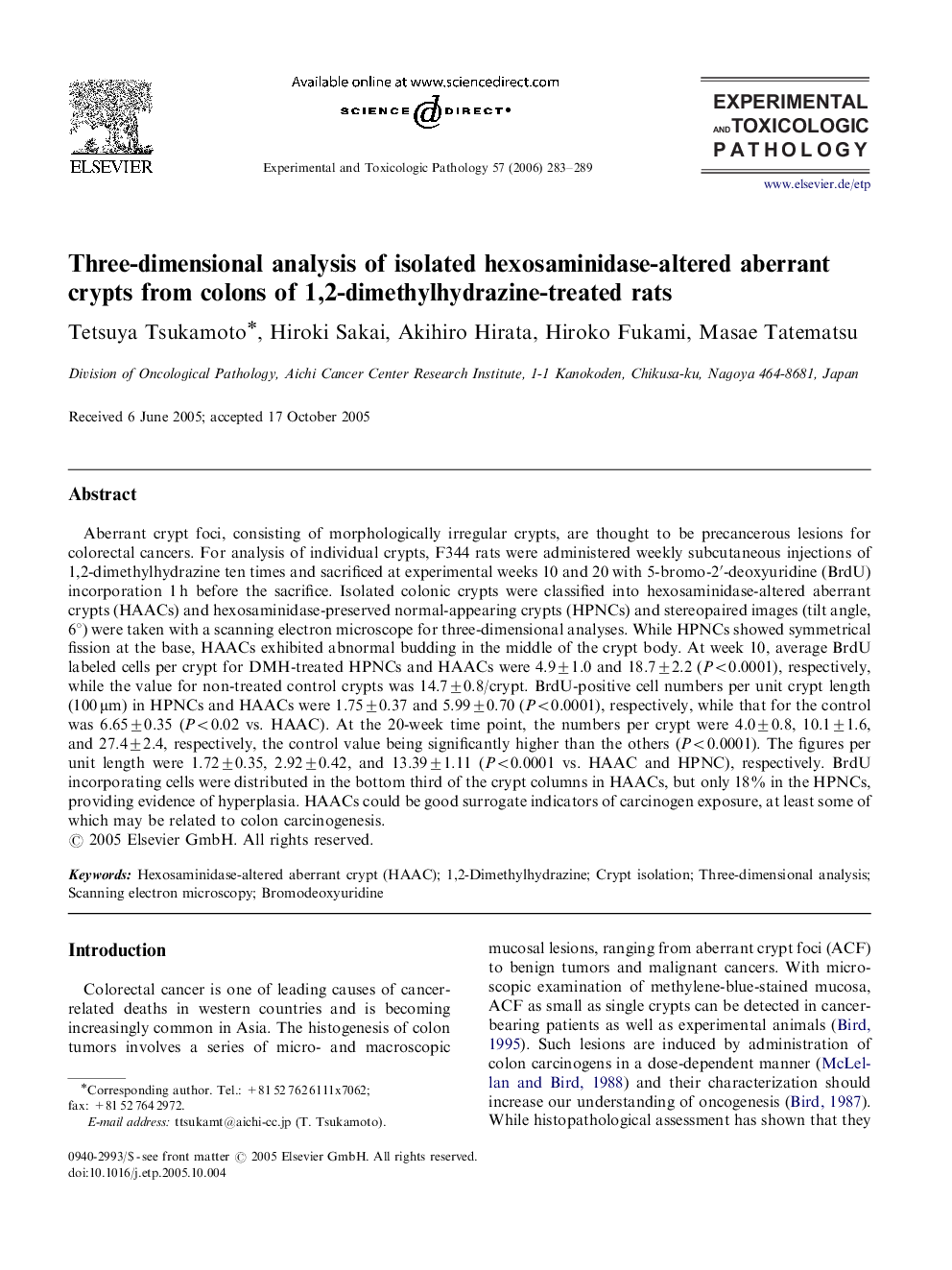| کد مقاله | کد نشریه | سال انتشار | مقاله انگلیسی | نسخه تمام متن |
|---|---|---|---|---|
| 2499551 | 1116516 | 2006 | 7 صفحه PDF | دانلود رایگان |
عنوان انگلیسی مقاله ISI
Three-dimensional analysis of isolated hexosaminidase-altered aberrant crypts from colons of 1,2-dimethylhydrazine-treated rats
دانلود مقاله + سفارش ترجمه
دانلود مقاله ISI انگلیسی
رایگان برای ایرانیان
کلمات کلیدی
موضوعات مرتبط
علوم زیستی و بیوفناوری
علوم کشاورزی و بیولوژیک
علوم دامی و جانورشناسی
پیش نمایش صفحه اول مقاله

چکیده انگلیسی
Aberrant crypt foci, consisting of morphologically irregular crypts, are thought to be precancerous lesions for colorectal cancers. For analysis of individual crypts, F344 rats were administered weekly subcutaneous injections of 1,2-dimethylhydrazine ten times and sacrificed at experimental weeks 10 and 20 with 5-bromo-2â²-deoxyuridine (BrdU) incorporation 1 h before the sacrifice. Isolated colonic crypts were classified into hexosaminidase-altered aberrant crypts (HAACs) and hexosaminidase-preserved normal-appearing crypts (HPNCs) and stereopaired images (tilt angle, 6°) were taken with a scanning electron microscope for three-dimensional analyses. While HPNCs showed symmetrical fission at the base, HAACs exhibited abnormal budding in the middle of the crypt body. At week 10, average BrdU labeled cells per crypt for DMH-treated HPNCs and HAACs were 4.9±1.0 and 18.7±2.2 (P<0.0001), respectively, while the value for non-treated control crypts was 14.7±0.8/crypt. BrdU-positive cell numbers per unit crypt length (100 μm) in HPNCs and HAACs were 1.75±0.37 and 5.99±0.70 (P<0.0001), respectively, while that for the control was 6.65±0.35 (P<0.02 vs. HAAC). At the 20-week time point, the numbers per crypt were 4.0±0.8, 10.1±1.6, and 27.4±2.4, respectively, the control value being significantly higher than the others (P<0.0001). The figures per unit length were 1.72±0.35, 2.92±0.42, and 13.39±1.11 (P<0.0001 vs. HAAC and HPNC), respectively. BrdU incorporating cells were distributed in the bottom third of the crypt columns in HAACs, but only 18% in the HPNCs, providing evidence of hyperplasia. HAACs could be good surrogate indicators of carcinogen exposure, at least some of which may be related to colon carcinogenesis.
ناشر
Database: Elsevier - ScienceDirect (ساینس دایرکت)
Journal: Experimental and Toxicologic Pathology - Volume 57, Issue 4, 6 March 2006, Pages 283-289
Journal: Experimental and Toxicologic Pathology - Volume 57, Issue 4, 6 March 2006, Pages 283-289
نویسندگان
Tetsuya Tsukamoto, Hiroki Sakai, Akihiro Hirata, Hiroko Fukami, Masae Tatematsu,